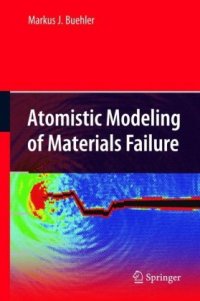
Ebook: Atomistic Modeling of Materials Failure
Author: Markus J. Buehler (eds.)
- Tags: Continuum Mechanics and Mechanics of Materials, Characterization and Evaluation of Materials, Mechanics, Biomaterials, Nanotechnology
- Year: 2008
- Publisher: Springer US
- Edition: 1
- Language: English
- pdf
Atomistic Modeling of Materials Failure is an introduction to molecular and atomistic modeling techniques applied to solid deformation and fracture. Focusing on a variety of brittle, ductile and geometrically confined materials, this detailed overview includes computational methods at the atomic scale, and describes how these techniques can be used to model the dynamics of cracks, dislocations and other deformation mechanisms.
A full description of molecular dynamics (MD) as a numerical modeling tool covers the use of classical interatomic potentials and implementation of large-scale massively parallelized computing facilities in addition to the general philosophies of model building, simulation, interpretation and analysis of results. Readers will find an analytical discussion of the numerical techniques along with a review of required mathematical and physics fundamentals. Example applications for specific materials (such as silicon, copper) are provided as case studies for each of the techniques, areas and problems discussed.
Providing an extensive review of multi-scale modeling techniques that successfully link atomistic and continuum mechanical methods, Atomistic Modeling of Materials Failure is a valuable reference for engineers, materials scientists, and researchers in academia and industry.
This is an introduction to molecular and atomistic modeling techniques applied to fracture and deformation of solids, focusing on a variety of brittle, ductile, geometrically confined and biological materials. The overview includes computational methods and techniques operating at the atomic scale, and describes how these techniques can be used to model cracks and other deformation mechanisms. The book aims to make new molecular modeling techniques available to a wider community.